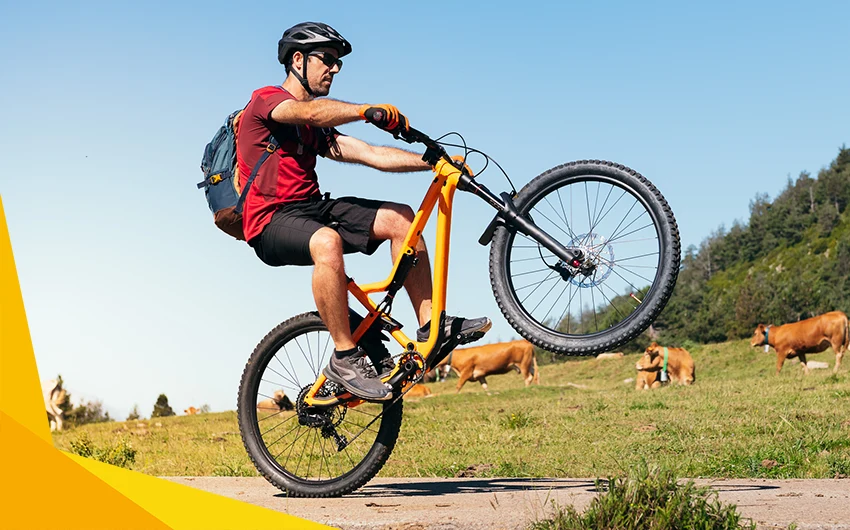Wheelie bikes are those with designs that make it easier to wheelie or learn to wheelie, such as BMXs, dirt jumpers, and mountain bikes with shorter chainstays.
Learning to wheelie is simple but not easy. However, if you follow the steps outlined below and practice regularly, you’re almost guaranteed to be pulling wheelies in the space of a few days.
In this article, we’ll explain what makes a good wheelie bike, outline the steps for learning how to wheelie on a bike, and review some of the best wheelie bikes on the market.
Contents
Which Bike Is Best for Wheelies?
The best bikes for wheelies are mountain bikes, BMXs, and dirt-jump bikes. Though each type is slightly different, they all have characteristics that make learning easy.
Wide Tires
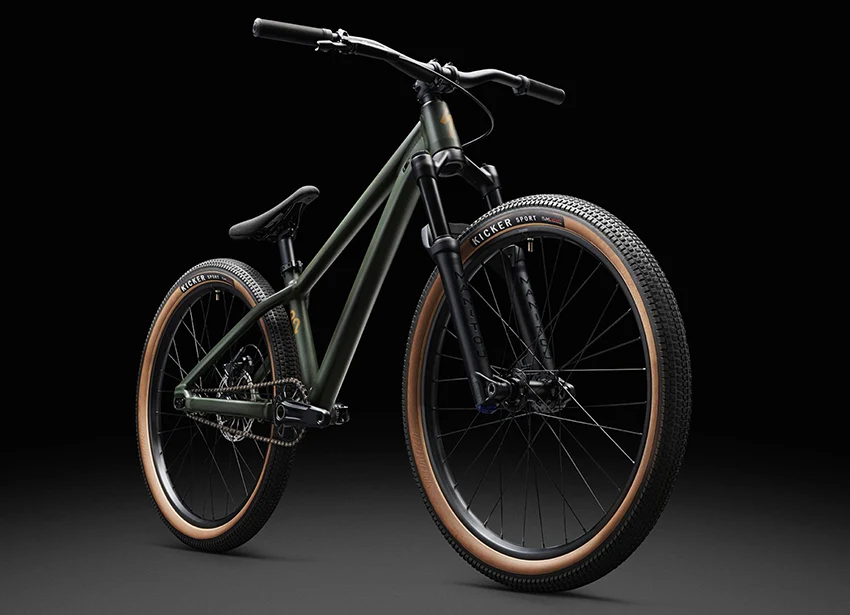
When learning to wheelie a bike, wide tires with some tread make it easier to balance.
The majority of tires on the best mountain bikes, BMXs, and dirt jumpers measure between 2.1 and 2.6 inches wide. This is the sweet spot for keeping lateral balance in the beginning.
In contrast, narrow road bike tires make balancing and learning the technique much harder.
Relatively Low Weight
The first piece of the technique for pulling a wheelie is popping the bike up. The bike lifts by pushing hard on the pedal and shifting your weight backward, but this is easier if the bike is lighter.
This is one of the reasons why best BMX bikes make it so easy to learn to wheelie. Lightweight mountain bikes and dirt jumpers are also great for this.
Enough Gearing
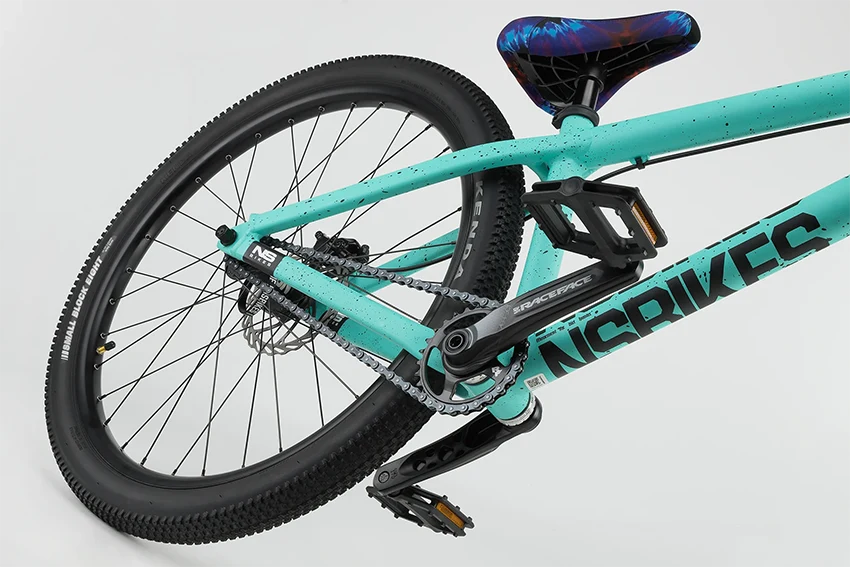
To get the bike into the air, you have to choose a low gear so you can generate enough force to pop up and maintain control over your pedal strokes to keep your wheelie going. If the gear is too high, you will spin the pedals too fast, and it will be difficult to control the bike.
Geometry – Chainstays and Weight Distribution
The geometry of a bike affects how easy it is to get it off the ground and keep your weight back.
Shorter chainstays and geometry that puts your weight further back make it easier to start and hold a wheelie.
This is exactly the type of geometry you see on mountain bikes, BMXs, and dirt jump bikes.
Can You Wheelie on Any Bike?
Once you’ve nailed down the technique for doing wheelies on a wheelie-friendly bike, you can apply the same technique to almost any bike you ride.
Yes, the balancing point is different for each model and each bike style, but once you’ve developed the skill of finding the balancing point and holding it, it’s possible to do it on any bike.
There are many examples of skilled riders doing wheelies on all types of bikes, including racing road bikes, such as Peter Sagan’s mastery in the video below.
How to Do a Wheelie on a Bike?
There’s a tried and tested method of learning how to wheelie a bike. By setting up correctly, practicing regularly, and following the techniques and tips below, you’ll quickly learn how to do a wheelie on a bike.
1. Find a Suitable Place
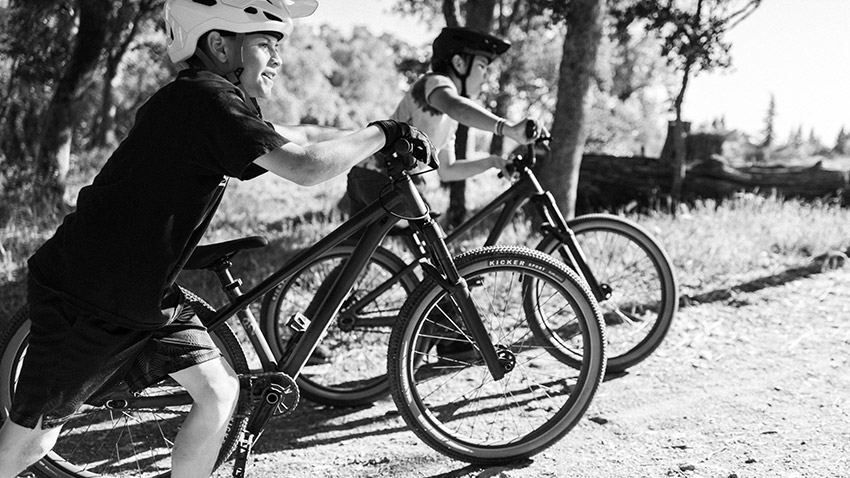
When you start to practice, choose a quiet area without traffic, such as a hardpack trail, dirt path, or field with short grass.
Ideally, you want to begin learning on a slight incline, as this makes it easier to pop the bike up and reach your balancing point.
While falling on a hardpack surface will hurt more, it’s also easier to keep your balance. Because grass is softer, maintaining balance is more challenging, so some beginners prefer harder surfaces.
2. Prepare Your Bike
You already know the best bike type; now it’s time to set it up. First, be sure to wear a helmet, as you’re likely to fall at least once while you’re learning.
Next, we recommend learning on a bike with flat pedals, so swap out your clipless pedals if you usually use them. Then, you can lower your seat height one or two inches from your usual setting.
Test your rear brake to ensure it’s in good working order, as this will save you if you overshoot your initiation and are about to loop out.
Finally, shift to a low-ish gear so you can get enough power down to pop up. Finding the perfect gear may take a bit of trial and error as you start to practice.
3. Start Pedaling Slowly and Steadily
Again, it’s best to start pedaling up a slight incline. Pedal with slow, steady strokes and prepare to pop up.
4. Start With Your Dominant Foot Behind
Most people find it best to start with their non-dominant foot forward, so when you push down hard to lift the front, your dominant foot ends up forward, making it easier to balance. However, it’s worth trying with each side forward a couple of times to see which feels more natural to you.
5. Push Down Hard on the Pedal and Shift Your Weight Back to Pop Up
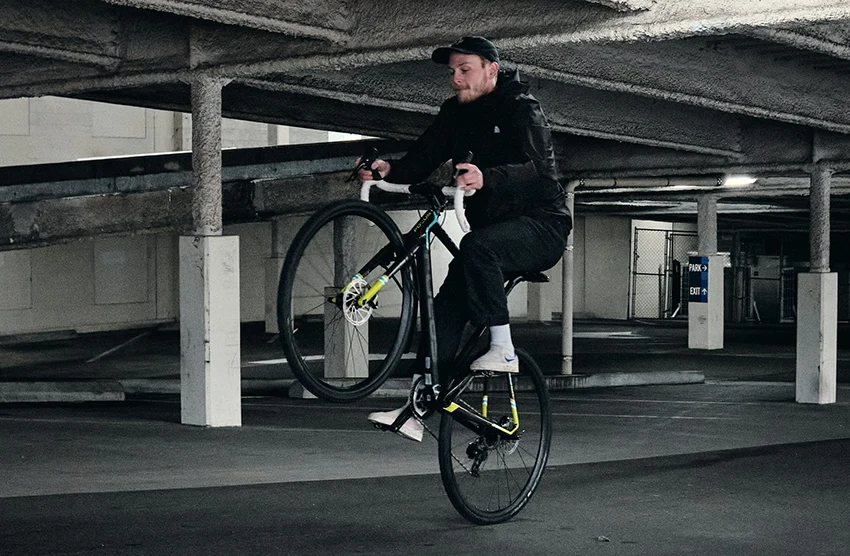
Just as the pedal (of whichever side you chose in the previous step) gets to 12 o’clock, push down sharply and shift your weight backward. Keep your arms almost fully locked out to keep your weight back. Avoid T-Rex arms, which pull the bike toward you, moving your weight forward and dropping the front wheel.
Once in the air, grab the rear brake to drop the front wheel back down. Then, repeat this process a few times to build confidence with the pop-up before you move on to the next step.
6. Look Forward and Find the Balancing Point
Once you’re confident popping up, it’s time to find the balance point, which is located at your rear wheel axle. Remember, if at any point you feel like you’re going to loop out (the rear wheel goes too far forward, and you fall backward), pull the rear brake to come back down.
The only way to consistently find your balancing point is to remain loose and relaxed. If you tense up or are overly nervous, you won’t be able to balance for an extended period.
7. Feather the Rear Brake and Balance
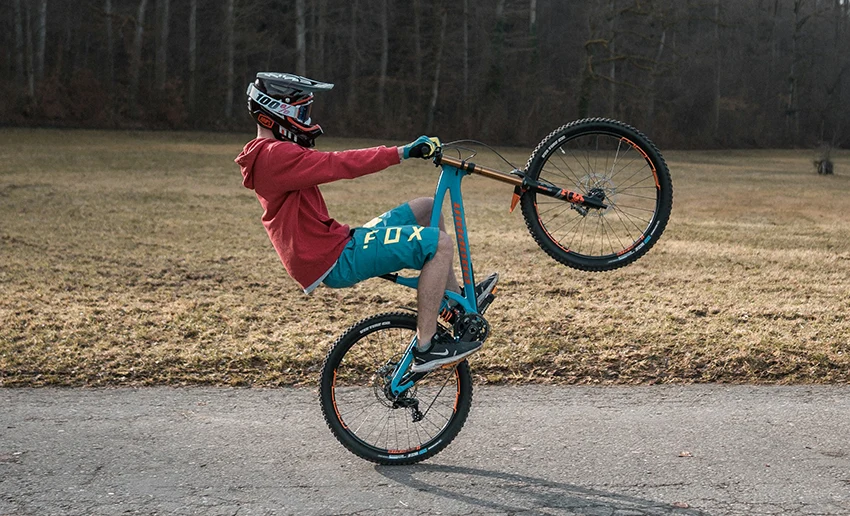
While finding your balancing point, you must get used to feathering the rear brake to keep the wheel where you want it and stop it from looping out.
At the same time, you’ll use your knees and the front wheel to act as a counterbalance to keep you upright and moving forward.
8. Keep Practicing
Learning to feather the brake correctly and stay upright is the most important and challenging part of the technique, requiring the most practice. Do a few minutes of practice daily to build up the technique, confidence, and muscle memory for a wheelie.
Best Wheelie Bikes We Recommend
1. Specialized P.2
MSRP: $1,250
Specialized Bikes’ P.2 is a premium dirt-jump mountain bike for those with deeper pockets. This makes a sweet wheelie bike, and with its Manitou J-Unit Comp 100mm fork, it’ll crush dirt jumping tracks and bike parks.
The lightweight and strong A1 aluminum frame makes the P.2 easy to get off the ground, while the powerful and precise front and rear disc brakes give you full control of your wheelies.
The geometry of dirt jumpers like Specialized P.2 is perfect for popping wheelies, manuals, and bunny hops, and low weight and premium components mean you’ll be zipping past friends at the pump track.
With space for 2.35″ tires, routing for a dropper post, and compatibility with a derailleur, you can turn your P.2 into the perfect park bike and get comfortable taking on bigger drops and gnarlier tricks.
Though the P.2 is a single-speed bike, its gearing is low enough for you to be able to easily pop a wheelie.
2. NS Bikes Movement 2
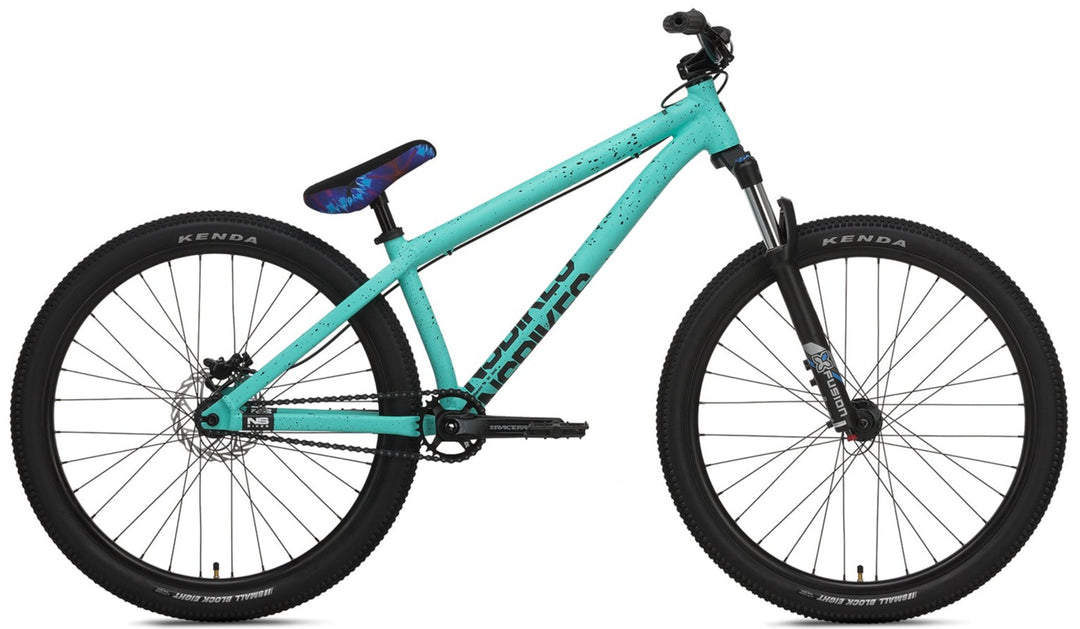
MSRP: $1,200
If you’re looking for a wheelie bike with a slightly more affordable price tag, the NS Bikes’ Movement 2 will still crush dirt jumps and bike park trails and help you learn to wheelie.
The funky paint-splattered aluminum frame will turn heads in town and at the park, especially as you rip wheelies, thanks to the stable Kenda Small Block 8 2.1″ tires and easy-to-modulate Shimano Deore rear hydraulic disc brake.
The Movement 2 lives up to its name by being responsive and agile, making it easy to wheelie and carve sharp corners while taking the sting out of big jumps, making you feel like a pro.
3. Wethepeople Nova BMX
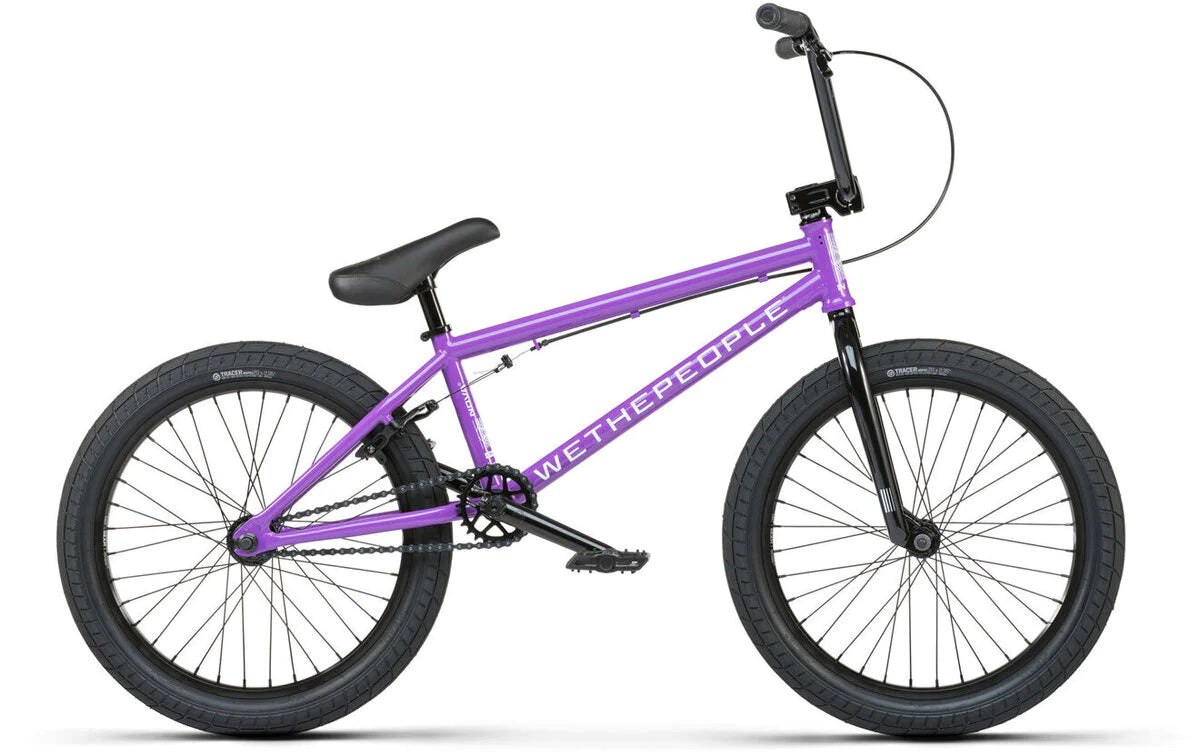
MSRP: $468
So, dirt jump bikes aren’t your style? Well, if you want to learn how to do sick wheelies, there’s no better choice than a model from one of the best BMX bike brands around — the Wethepeople. BMXs make great cheap wheelie bikes with their wheelie-friendly geometry and components.
This tough Hi-Ten steel machine can take whatever you throw at it, and its super-short chainstays make it easy to get in the air and master the art of wheelies.
The price and features of the Nova BMX make it ideal for beginners who want to learn and improve their skills, such as the wide, stable 2.35″ tires and grippy ECLAT pedals.
A free-coaster hub also allows you to coast backward without pedaling, giving you more control and creativity when you get confident doing wheelies and want to start showing off.
Buy from MikesBikes.com4. Cannondale Trail 5
MSRP: $670
If you’re looking for a bike that’s perfect for learning to do wheelies but can also handle light mountain biking, you might want to check out the Cannondale Trail 5 mountain bike. The Trail 5 is an excellent choice for beginners who want to have fun and improve their skills.
It has a lightweight and durable SmartForm C3 aluminum frame, so it’s easier to get into the air than similar bikes and can also take a beating. You get 2.25″ WTB Ranger Comp tires, which make it stable and easy to balance on the rear wheel while providing tons of grip on dry trails.
Overall, the Cannondale Trail 5 is an awesome bike and one of the best bikes for wheelies. It also has everything you need to start on your mountain bike adventure.
Buy from REI.com5. Co-op Cycles DRT 3.1
MSRP: $2,599
Are you serious about mountain biking? If so, the Co-op Cycles DRT 3.1 could be the bike for you. A full-suspension beast like this is the perfect entry into trail riding, and with 2.4″ tires, it’s like learning to wheelie on easy mode.
The short chainstays, wide tires, rear suspension, and easy-to-control hydraulic disc brakes make this a great wheelie bike. It’ll also give you tons of confidence on rough terrain, and you’ll be turning heads when you charge past your friends on the local downhill trails.
Thankfully, Co-op Cycles offers the DRT 3.1 in a range of sizes from 5’0″ and up. The two smaller sizes have 27.5″ wheels to make the bike easier to control.
While it’s not cheap, this reliable machine is a worthy consideration if you want to take your mountain biking skills to the next level.
Buy from REI.com6. GT Performer 29
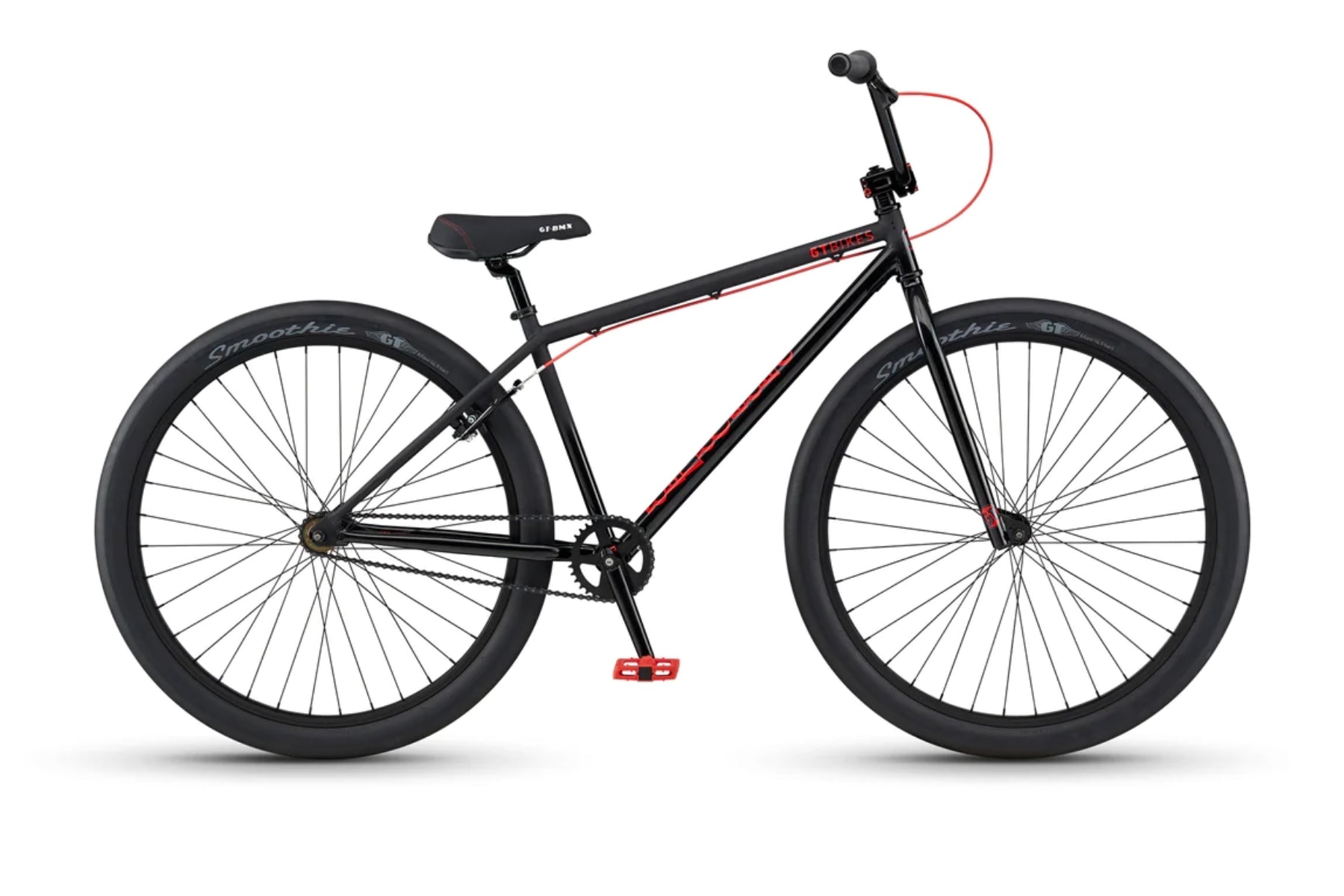
MSRP: $440
The rigid version of GT Bikes’ Performer is a lower-cost entry into pump track and big-wheel BMX riding. No, it can’t handle the same drops and abuse as a bike with a plush suspension fork, but it will help you hone your skills before you’re ready to upgrade.
Like the other dirt jumpers reviewed above, the GT Performer is a great wheelie bike with its 29″ wheels, low weight (even lower without the suspension fork), short chainstays, and a rear rim brake.
Once you’ve mastered the wheelie, the Performer’s extra-long brake hose means you can practice your bar spins while getting air time at the local track.
Add the GT Performer 29 to your wishlist for a low-maintenance and affordable big-wheel BMX.
Buy from JensonUSA.com7. Transition TransAM
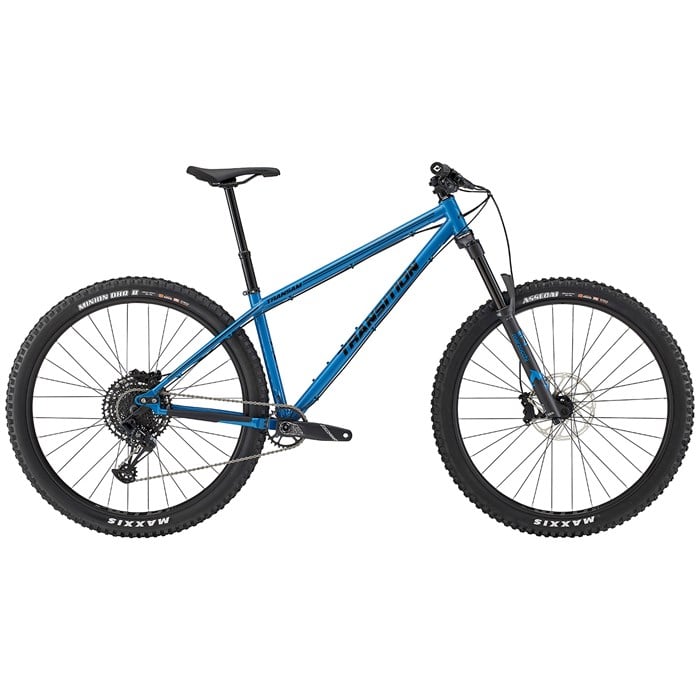
MSRP: $2,599
The Transition Bikes’ TransAM earns its name thanks to hand-picked components and a frame design that can handle whatever you throw at it, including the TransAmerica trail.
The wide 2.5″ and 2.4 Maxxis tires match the frame geometry, and the wide tires provide a stable base for popping wheelies.
A lightweight, stiff aluminum frame and 150 mm suspension fork will help you shred at the local dirt jump or pump track, and front and rear hydraulic disc brake will keep you in control so you don’t loop out when practicing.
Sizing starts for riders from 5’4″, so if you want a sleek dirt jumper that blends in with the trail and can take a beating, this is worth trying.
Buy from evo.comConclusion
As we’ve seen, learning how to do a wheelie on a bike is a straightforward yet challenging process that any dedicated rider can learn. Just relax, loosen up, go through the steps, and you’ll get there eventually.
The learning process is much easier if you have the proper bike. The best wheelie bikes include mountain bikes, dirt jumpers, and BMXs. Each has attributes that make it easier to learn to wheelie a bike or perform a manual.
We’ve covered a range of wheelie bikes above, so consider one of these (or a similar model) for your next bike if you’re struggling with your current one. This will give you the best shot at mastering the wheelie and taking your bike skills to the next level.

